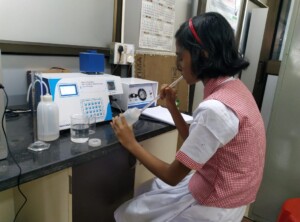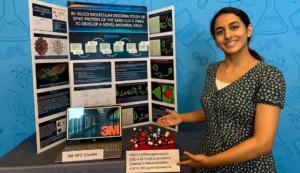AI Family Challenge Introduces Artificial Intelligence, Encourages Problem Solving

There was home science but no computer science in the small town secondary school for girls that Tara Chklovski attended outside Delhi. Inspired by a tinkering father, she wanted to be an aerospace engineer. After a masters degree at Boston University, Chklovski launched into a Ph.D. at USC. But the pull to help more girls experience powerful science, engineering, and technology education drew her away. In 2006, she launched nonprofit Iridescent to create and deliver powerful STEM learning to empower underrepresented young people everywhere. (Listen to our podcast interview with Tara.)
Chklovski didn’t take any compensation for the first seven years and relied on friends and family support. Ignoring conventional wisdom about getting a program right in one place, she launched a global Technovation competition in 2009. In the first year teams from nine countries participated. Last year nearly 20,000 girls from 115 countries participated in Technovation. The 2018 Gold Scholarship winners were Team Cantavits from India for an app to help address e-waste disposal.
Evaluations found that students participating in Technovation challenges display are more self-confident, better problem solvers, better entrepreneurs, more resilient and more self-reliant.
Sticking with the parents-as-first-teacher and go-global-and-see-what-breaks model, the Iridescent team launched the AI Family Challenge. Families learn about Artificial Intelligence and use it to solve a problem in their community.
Five design challenges introduce families to AI concepts. Three more design challenges explore robotics. Ten more lessons prepare families to solve a problem in their community and submit to the AI World Championship.
Here are some examples of prototypes the families developed:
- Duckweed Vacuum Cleaner, Bolivia – Invention uses image recognition to find and eradicate invasive species in Lake Titicaca.
- My Drawings Speak Up, Palestine – Analyzes drawings to see if children are experiencing violence or bullying.
- Scoutbot Waterguardian, Spain – Visual recognition and alert system that monitors public pools for drowning.
The AI Family Challenge works on a platform using Machine Learning for Kids which builds on IBM Watson and contributes to Scratch, a widely used educational coding platform.
How should schools incorporate AI? Chklovski said, “Make first step fun and less threatening.” She encourages the use of their open curriculum. Schools can use the content in class or after school in clubs.
The United Nations is hosting an AI for Good Summit May 29-31 in Geneva. The goal is to “connect AI innovators with problem owners, to identify practical applications of AI to accelerate progress towards the UN Sustainable Development Goals.”
Chklovski is chairing the AI for Good education track. In a program summary, she describes Iridescent’s mission, “There is a need for grass-roots work with adults and children in the most vulnerable and underserved groups, to help them understand how their worlds are changing, what AI is, how some of these technologies work, and what role they can play, now and in the future.”
For more, see:
- Podcast: Using AI to Solve Problems in Communities (Tara Chklovski)
- Podcast: Exposing Engineering to Underrepresented Groups with Dr. Amon Millner
- Motivating Young People to Pursue the Professions of the Future
- How to Be Employable Forever
This post is a part of the Getting Smart Future of Work Campaign. The future of work will bring new challenges and cause us to shift how we think about jobs and employability — so what does this mean for teaching and learning? In our exploration of the #FutureOfWork, sponsored by eduInnovation and powered by Getting Smart, we dive into what’s happening, what’s coming and how schools might prepare. For more, follow #futureofwork and visit our Future of Work page.
Stay in-the-know with innovations in learning by signing up for the weekly Smart Update.
This post was originally published on Forbes.









0 Comments
Leave a Comment
Your email address will not be published. All fields are required.